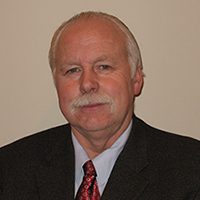
By Norm Grusnick, P.Eng., ECCO Supply
Smudging is more commonly known among First Nations as a ceremonial burning of one or more medicines gathered from nature. In our world of HVAC, smudging is a term used to describe dirt being deposited on the ceiling around a supply diffuser.
Overhead air distribution is one of the most common ways of distributing conditioned air into a space. When done properly, it mixes cool supply air with warmer room air to create a comfortable, tempered environment for occupants. The process, however, does not come without moving fine dust particles, which may contribute to a phenomenon known as “ceiling smudging”.
The problem of dirt collecting around ceiling diffusers has been a concern in the air distribution industry for a long time. Some people have asked about this dirt and the impact on indoor air quality (IAQ).
When air jets leave the diffuser face, they connect themselves to the ceiling. This is called Coanda Effect. The ASHRAE Handbook on HVAC Systems and Equipment 2020 describes Coanda effect as,
“An airstream moving adjacent to or in contact with a wall or ceiling creates a low pressure area immediately to that surface, causing the air to remain in contact with the surface substantially throughout the length of throw. This Coanda effect, also referred to as the surface or ceiling effect, counteracts the drop of a horizontally projected cool airstream.”
So, as the jet crosses the ceiling, it is constantly entraining more room air into the jet. The air velocity creates the low-pressure area. The higher the velocity, the lower the pressure. The highest velocity is closest to the diffuser discharge area. For perforated diffusers, it is across the entire face of the diffuser.
The Handbook also states:
“Smudging is the deposition of particles on the air outlet or a surface near the outlet. Particles are entrained into the primary discharge jet and impinged onto the device or ceiling surface in areas of lower pressure. Smudging tends to be heavier in high traffic areas near building entrances, where particles are brought into a space.”
Regular cleaning of floors and other surfaces in the room where the outlet is located will drastically reduce the amount of dirt within the space. Smudging, in turn, can normally be reduced by cleaning your carpets and floors and reducing dirt carried into the building.
The dirt on the diffusers can usually be easily wiped off with a damp cloth or disinfecting wipe. Be sure to dry after cleaning to reduce the possibility of more dirt impinging on the surface. ■


